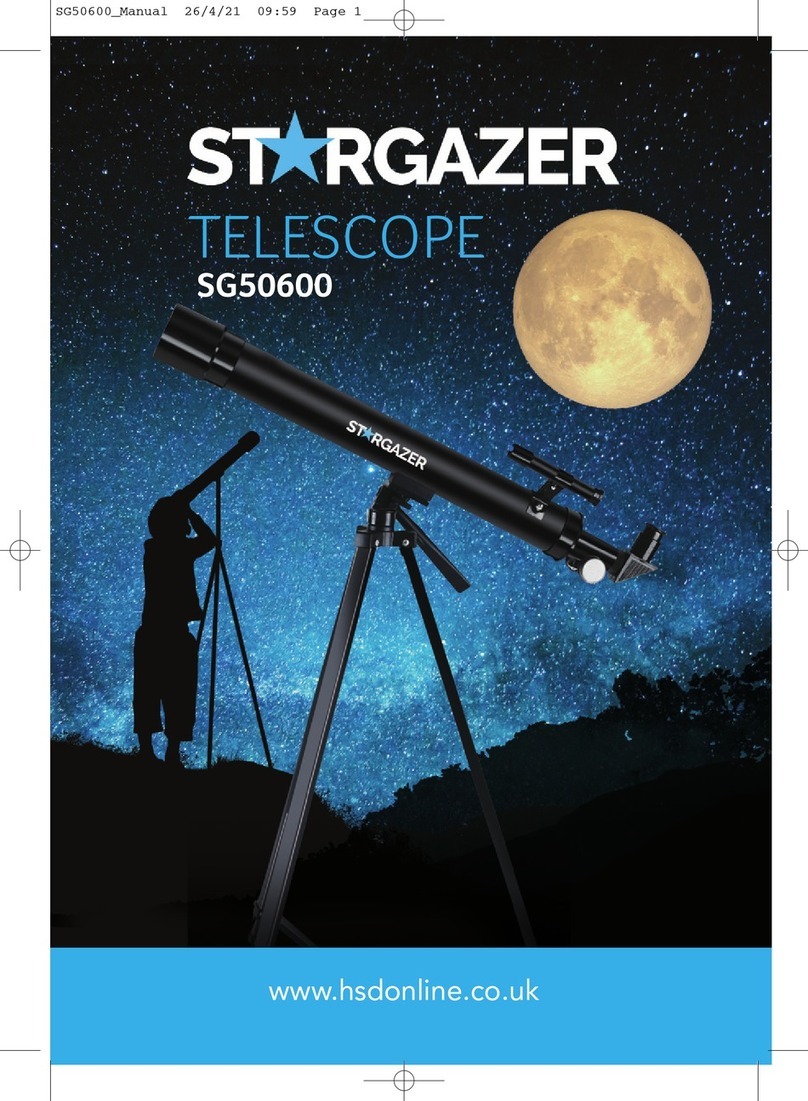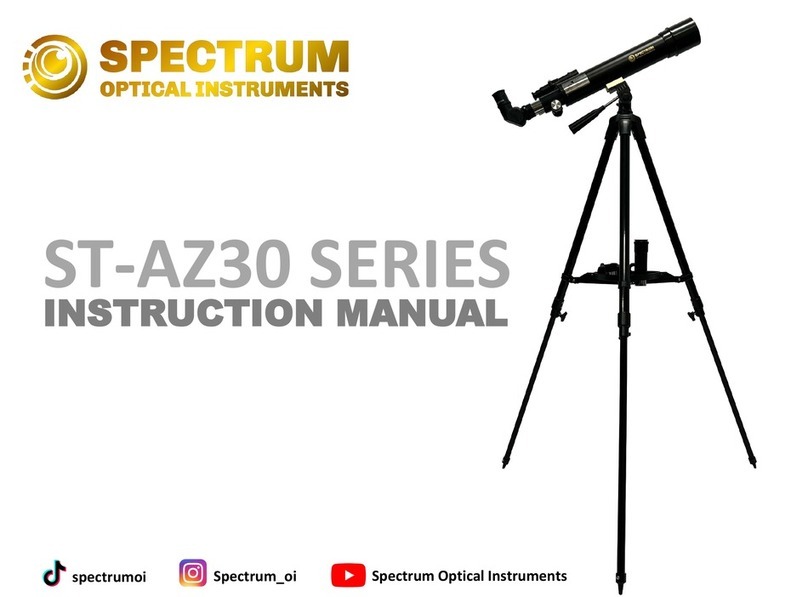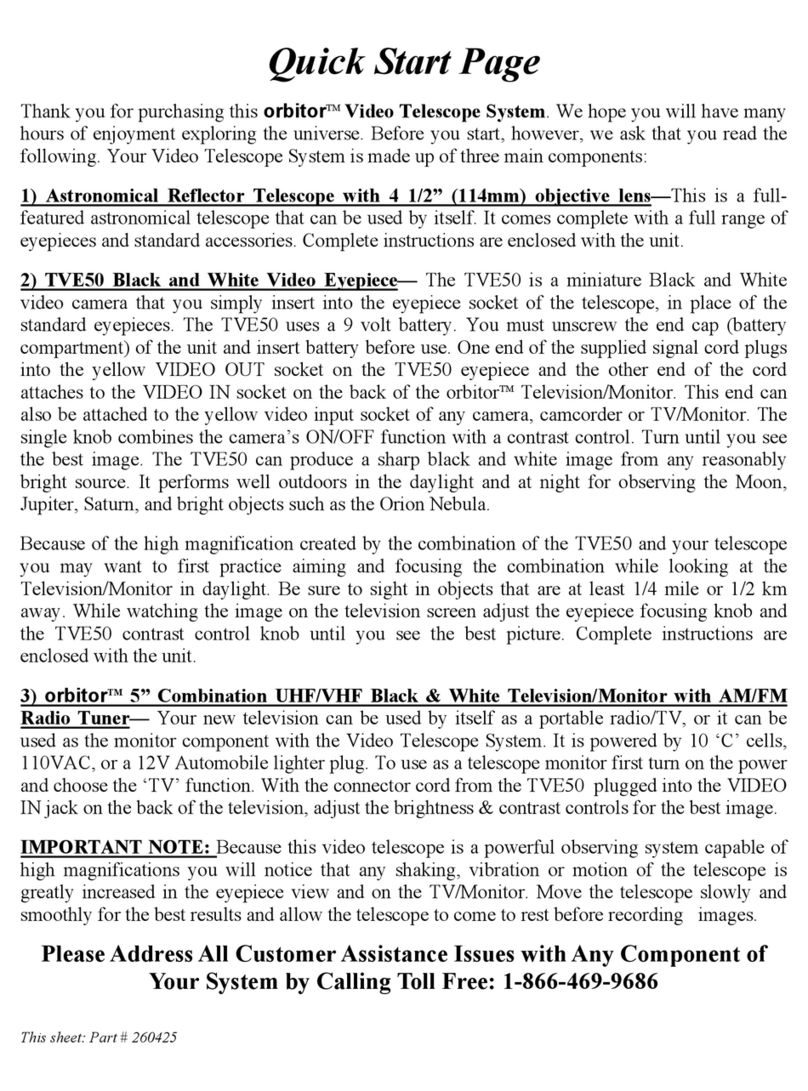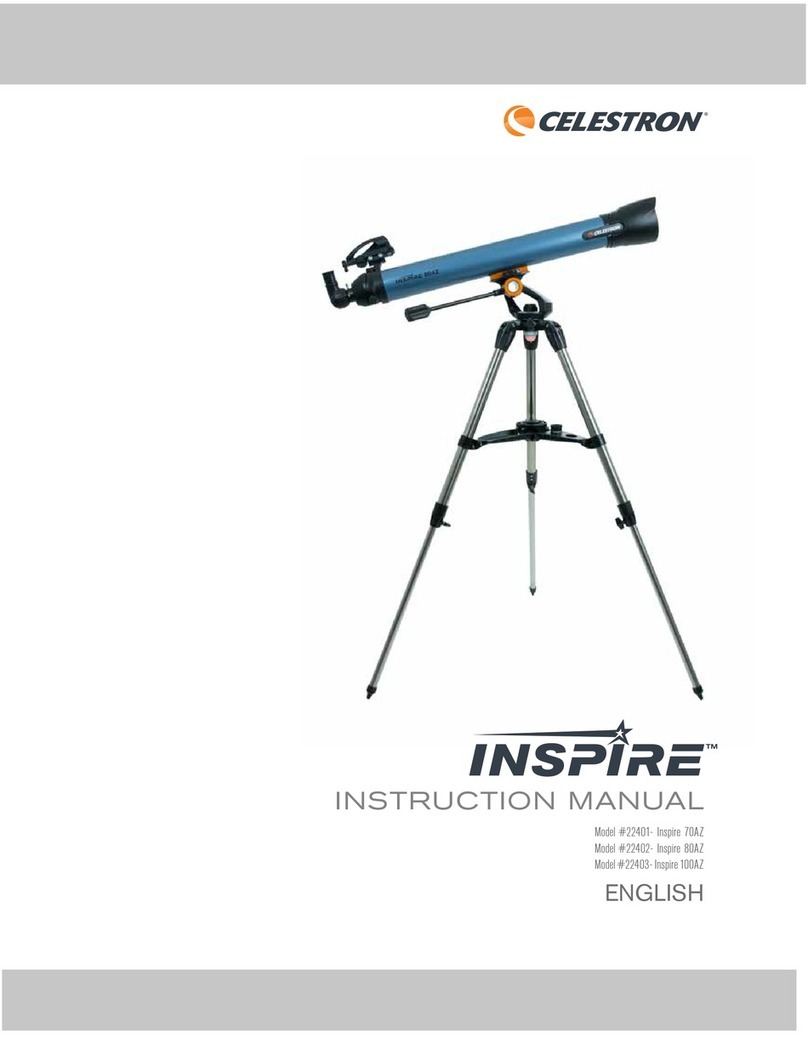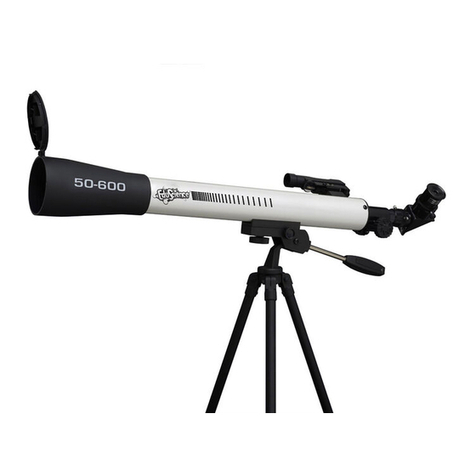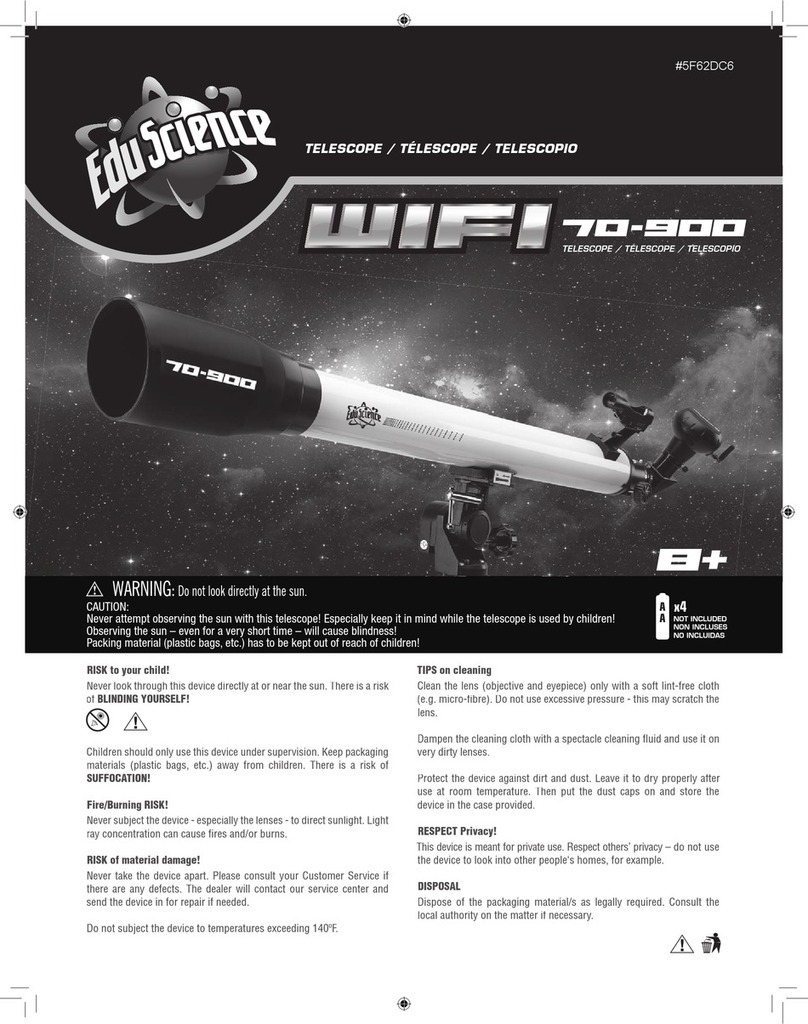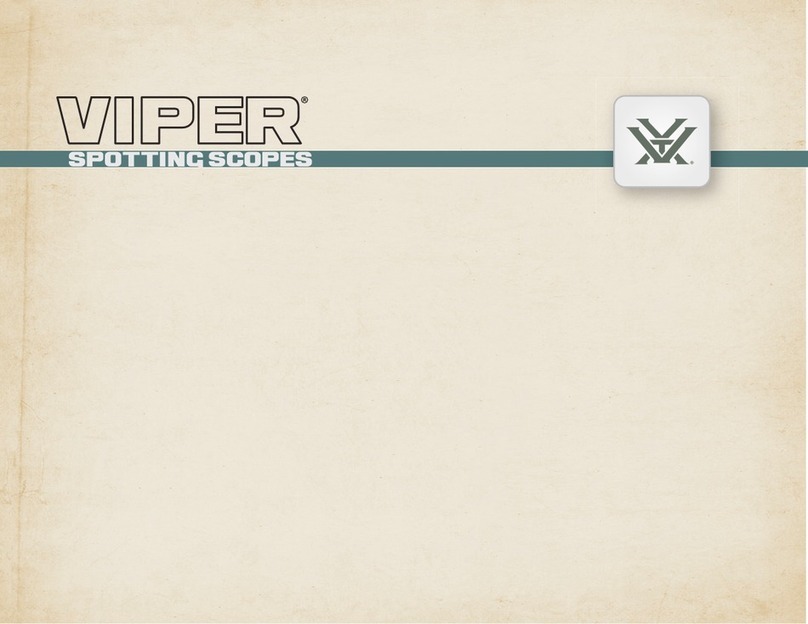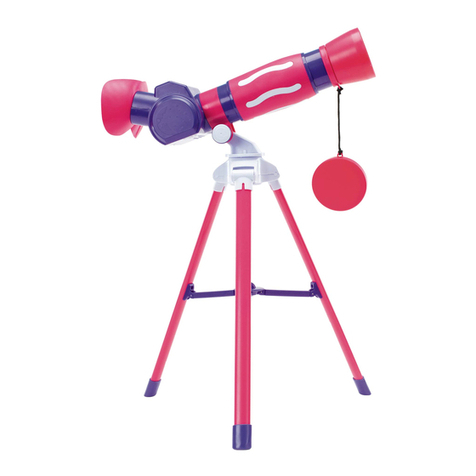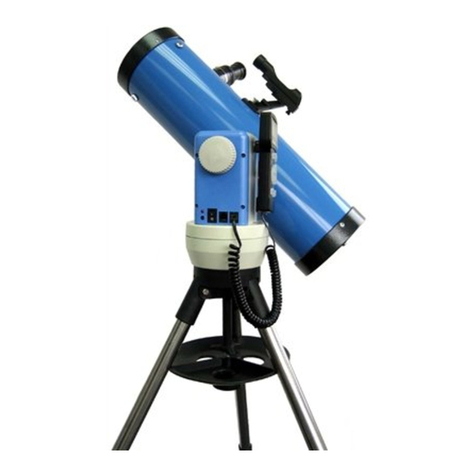Discovery Telecom 4410040 User manual

Space Exploration Gear
40mm Student
Telescope
8+
AGES
INSTRUCTION MANUAL
40mm Student
Telescope

WARNING
CHOKING HAZARD – Small parts. Not for children under 3 years.
01 03
02
04
05
06 07
08
2
CONTENTS

3
Contents
40mm Objective Lens
Tabletop Tripod
Optical Tube Assembly (OTA)
with Dew Shield
Tripod Head
Focus Wheel
Diagonal
.965” Eyepieces
(12.5mm and 20mm)
Compass
01
02
03
04
05
06
07
08
Parts Overview
CONTENTS
Instruction Manual, &
Downloadable Planisphere Visit:
www.exploreone.com/pages/product-manuals

4
Introduction:
Begin your adventures in observation with the Discovery 40mm Student
Telescope. This easy-to-use refractor is a great starter instrument for both
daytime nature watching and nighttime moon gazing. Spend an afternoon
visually exploring distant landscape features or getting a closer view of wildlife
without disturbing it. Once the stars come out, visit the chiseled ridges and
craters of the lunar surface or tour some of the night sky’s brightest objects.
For added versatility, the telescope comes with two interchangeable eyepieces,
so you can experiment with different magnifications and fields of view.
Assembly:
Note: We recommend assembling your telescope for the first time in the daylight or in a lit
room so that you can familiarize yourself with assembly steps and all components.
• Find a stable surface, like a table. Set the tripod on the table and open it until
the tripod spreaders are fully extended.
• Snap the telescope tube into the U-shaped clamp on the top of the tripod head.
• Insert the diagonal into the focuser and secure it by tightening the
thumbscrews.
• Place your chosen eyepiece into the diagonal. We recommend starting with the
20mm because it will provide the widest field of view.
HOW TO SET UP

5
HOW TO SET UP
1. 40mm Objective Lens
2. Tabletop Tripod
3. Optical Tube Assembly (OTA)
with Dew Shield
4. Tripod Head
5. Focus Wheel
6. Diagonal
7. .965” Eyepiece
(12.5mm and 20mm)
8. Compass
2
3
4
5
6 7
1
8

TELESCOPE TERMS TO KNOW:
Diagonal: A mirror that deflects the ray of light 90 degrees.
With a horizontal telescope tube, this device deflects the light upwards so
that you can comfortably observe by looking downwards into the eyepiece.
The image in a diagonal mirror appears upright, but rotated around its
vertical axis (mirror image).
Focal length: Everything that magnifies an object via an optic lens has a
certain focal length. The focal length is the length of the path the light travels
from the surface of the lens to its focal point. The focal point is also referred
to as the focus. In focus, the image is clear. In the case of a telescope, the
focal length of the telescope tube and the eyepieces are used to determine
magnification.
Lens: The lens turns the light that falls on it around in such a way so that
the light gives a clear image in the focal point after it has traveled a certain
distance (focal length).
Eyepiece: An eyepiece is a system made for your eye and comprised of one
or more lenses. In an eyepiece, the clear image that is generated in the focal
point of a lens is captured and magnified still more.
Magnification: The magnification corresponds to the difference between
observation with the naked eye and observation through a magnifying device
like a telescope. If a telescope configuration has a magnification of 30x, then an
object viewed through the telescope will appear 30 times larger than it would
with the naked eye. To calculate the magnification of your telescope setup,
divide the focal length of the telescope tube by the focal length of the eyepiece.
6
INSTRUCTION MANUAL

7
Did you know?
The magnifying power of a telescope is determined by dividing the focal length
of the telescope by the focal length of the eyepiece. This means that as the
focal length of your eyepiece increases, the magnifying power decreases.
Using your telescope:
Now you are ready to start observing!
Put the 20mm eyepiece into the diagonal to get the widest field of view. This
wider field of view will make it easier to locate and track objects.
To move the scope up, down and side to side, grip the telescope near where
the tube meets the focuser and steadily move the tube until your target comes
into view in the eyepiece. It is important to remember that the rotation of
the Earth means objects will move out of your eyepiece fairly quickly. Once
you have found and focused on your desired target, you will have to track the
object as it journeys across the night sky.
For a closer look at an object, you can insert the 12.5mm eyepiece. The
magnification will increase from 20x to 32x.
Cleaning:
Your telescope is a precision optical device and keeping the optics free of dust
and dirt is crucial for optimal performance. To clean the lenses (objective
and eyepiece) use only a photo-grade soft brush or a lint-free cloth, like a
microfiber cloth. Do not press down too hard while cleaning, as this might
scratch the lens. Ask your parents to help if your telescope is really dirty. If
necessary, the cleaning cloth can be moistened with an optical glass cleaning
fluid and the lens wiped clean using very little pressure. Do not use harsh
detergents!
Make sure your telescope is always protected against dust and dirt.
After use, leave it in a warm room to dry off before storing.

8
TELESCOPE TERMS TO KNOW:
Diagonal: A mirror that deflects the ray of light
90 degrees.
With a horizontal telescope tube, this device
deflects the light upwards so
that you can comfortably observe by looking
downwards into the eyepiece.
The image in a diagonal mirror appears upright,
but rotated around its
vertical axis (mirror image).
Focal length: Everything that magnifies an
object via an optic lens has a certain focal
length. The focal length is the length of the path
the light travels from the surface of the lens to
its focal point. The focal point is also referred
to as the focus. In focus, the image is clear. In
the case of a telescope, the focal length of the
telescope tube and the eyepieces are used to
determine magnification.
Lens: The lens turns the light that falls on it
around in such a way so that the light gives
a clear image in the focal point after it has
traveled a certain distance (focal length).
Eyepiece: An eyepiece is a system made
for your eye and comprised of one or more
lenses. In an eyepiece, the clear image that is
f=20 mm f=12.5 mm
The Moon
f=20 mm f=12.5 mm
Terrestrial Images

9
Troubleshooting Guide:
No picture Remove dust protection cap and sun-shield
from the objective opening.
Blurred picture Adjust focus using focus ring.
No focus possible Wait for temperature to balance out.
Bad quality Never observe through a glass surface
such as a window.
Viewing object visible
in the finder, but not
through the telescope
Align finder to telescope
(see instructions)
Despite using star
diagonal prism the
picture is “crooked”
The star diagonal prism should be
vertical in the eyepiece connection.

10
SAFETY WARNINGS
• Respect privacy: When using
this device, respect the
privacy of other people. For
example, do not use them to
look into people’s homes.
• Choking hazard: Children
should only use device
under adult supervision.
Keep packaging materials
like plastic bags and rubber
bands out of the reach of
children as these materials
pose a choking hazard.
• Risk of blindness: Never
use this device to look
directly at the Sun or in the
direct proximity of the Sun.
Doing so may result in a
permanent loss of vision.
• Risk of fire: Do not place
device, particularly the
lenses, in direct sunlight.
The concentration of light
rays could cause a fire.
• Do not disassemble this
device. In the event of a
defect, please contact
your dealer. The dealer
will contact the Customer
Service Department and
can send the device in to
be repaired if necessary.
• Do not subject the
device to temperatures
exceeding 60° C (140° F).
• Disposal: Keep packaging
materials, like plastic bags
and rubber bands, away
from children as they a
pose a risk of suffocation.
Dispose of packaging
materials as legally
required. Consult the local
authority on the matter
if necessary and recycle
materials when possible.
Read and follow the instructions, safety rules, and first aid information.

©2017 Discovery Communications, LLC. Discovery™and the Discovery™logo are
trademarks of Discovery Communications, LLC, used under license.
All rights reserved. discoverykids.com
©2017 Explore Scientific, LLC, a Journey North Company.
1010 S. 48th Street, Springdale AR 72762
All rights reserved. explorescientificusa.com | exploreone.com | 866.252.3811
Made in China
CONFORMS TO THE SAFETY REQUIREMENTS OF ASTM F963
This manual suits for next models
1
Table of contents
Other Discovery Telecom Telescope manuals
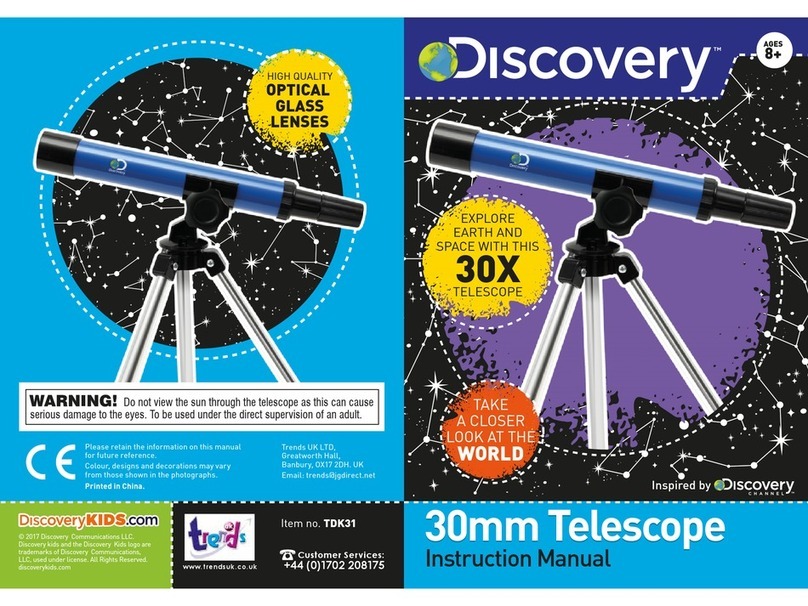
Discovery Telecom
Discovery Telecom TDK31 User manual
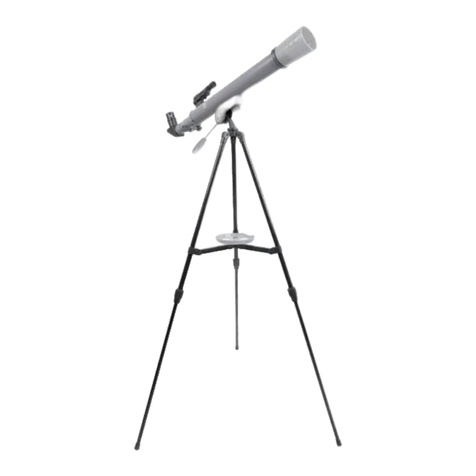
Discovery Telecom
Discovery Telecom 50mm Student User manual
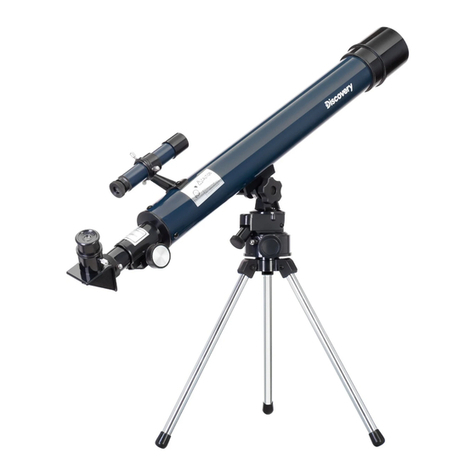
Discovery Telecom
Discovery Telecom Scope Set 2 User manual
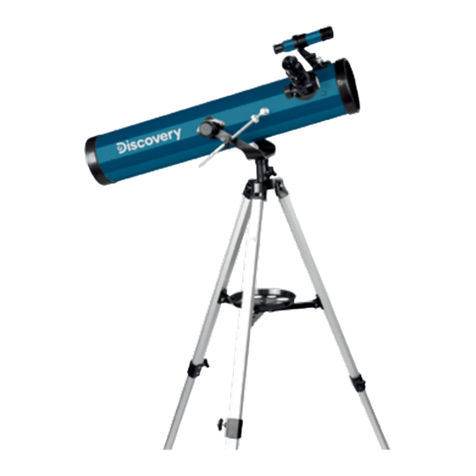
Discovery Telecom
Discovery Telecom Spark 506 AZ User manual
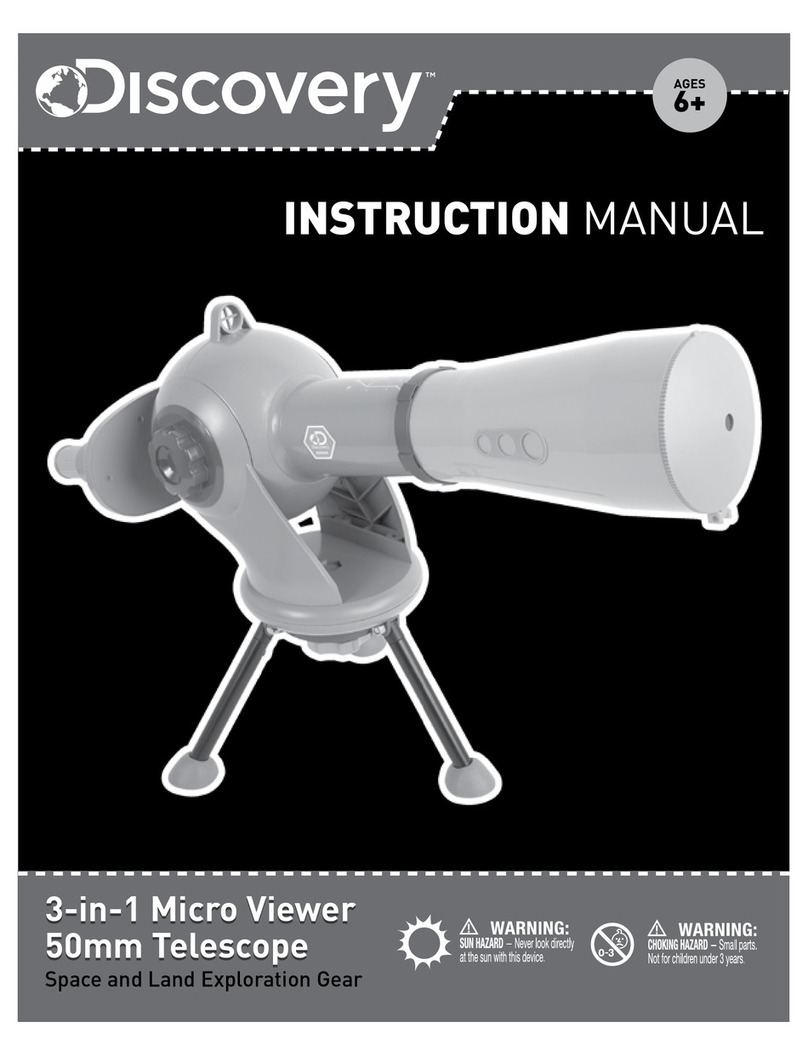
Discovery Telecom
Discovery Telecom 3-in-1 Micro Viewer User manual
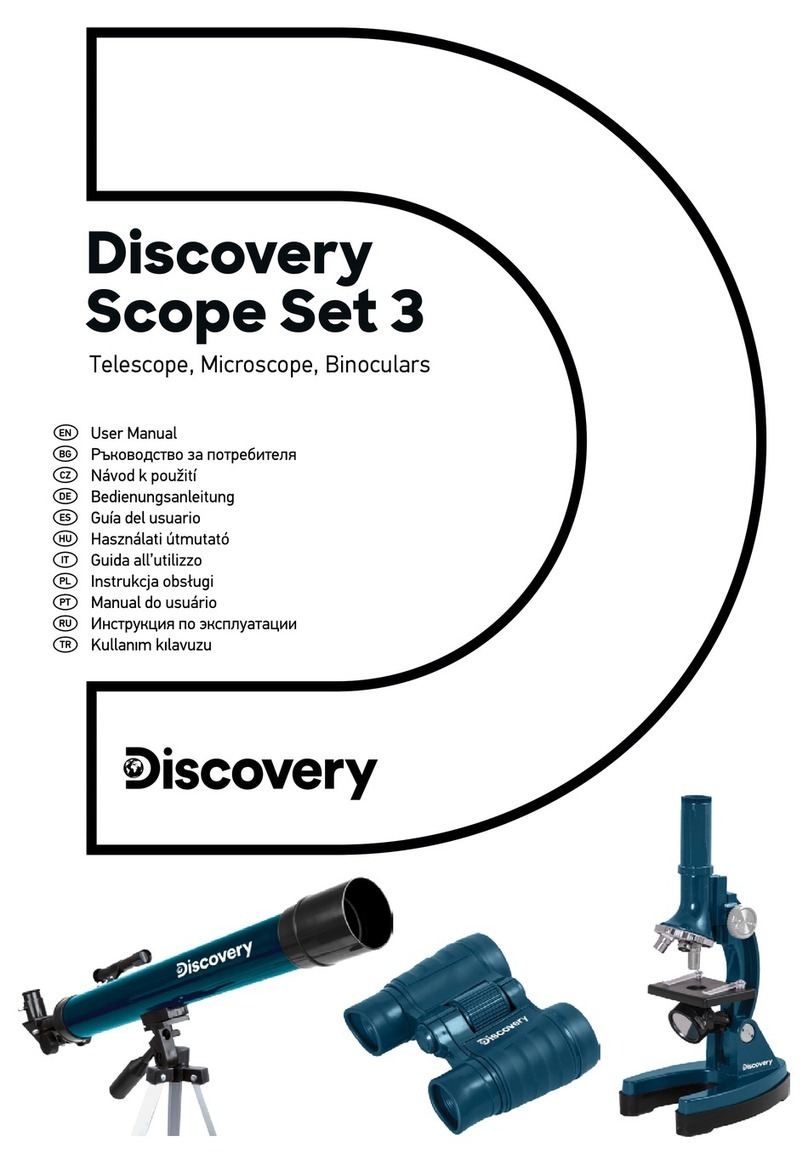
Discovery Telecom
Discovery Telecom Scope Set 3 User manual
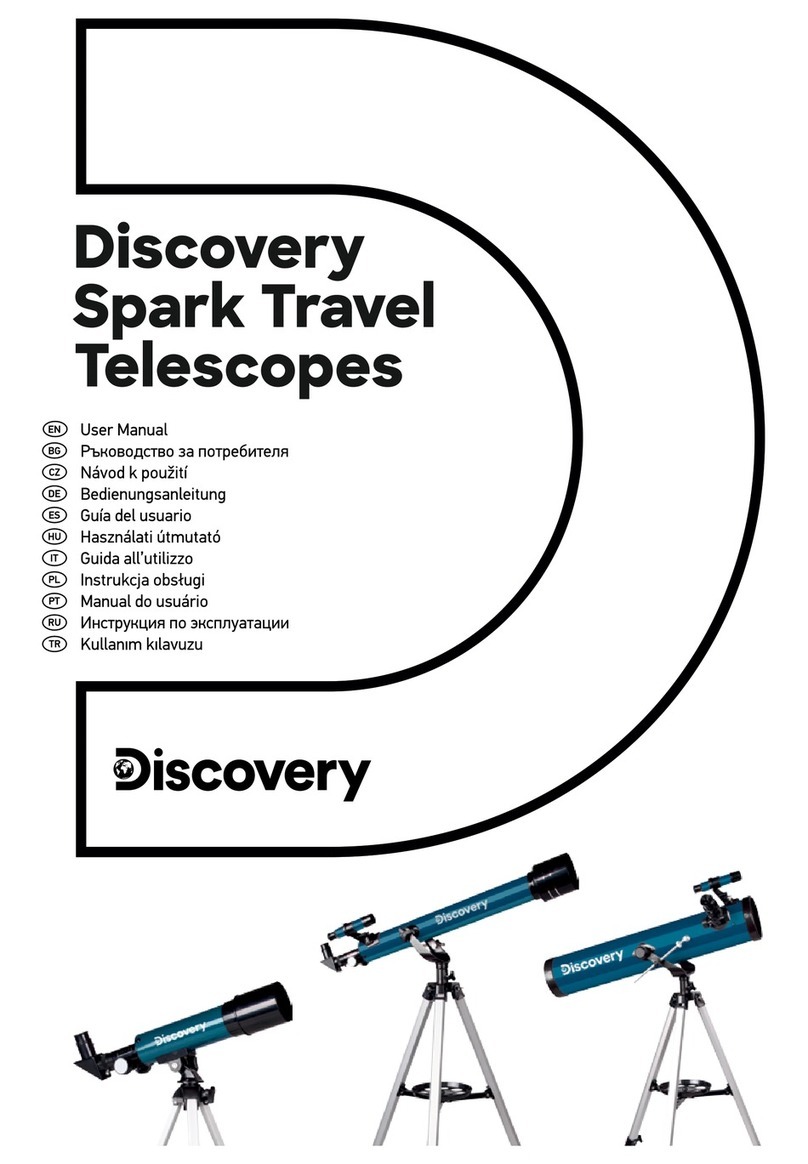
Discovery Telecom
Discovery Telecom Spark Travel 50 User manual
